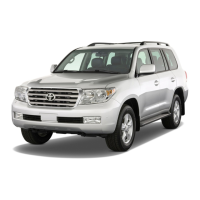
Do you have a question about the Toyota 2009 Land Cruiser and is the answer not in the manual?
| Brand | Toyota |
|---|---|
| Model | 2009 Land Cruiser |
| Category | Automobile |
| Language | English |
Overview of electronic and mechanical keys provided with the vehicle.
Operations performable with the electronic key on person.
Details on adjusting front seats, active head restraints, mirrors, and steering wheel.
Adjusting and removing head restraints for front, second, and third seats.
Information on correct use, fastening, releasing, and adjusting seat belts.
Information on correct driving posture and SRS airbags.
Important points, types of restraints, and general installation instructions.
Advice on driving under influence, defensive driving, and driver distraction.
Procedures for starting the engine, driving, stopping, and parking the vehicle safely.
Precautions for driving in rain: reduced visibility, fogged windows, slippery roads, and high speeds.
Precautions: pedal familiarity, driving posture, avoiding flammable materials, and exhaust fumes.
Precautions: do not shift gears while moving, turn off engine while driving, use engine braking, adjust mirrors while driving.
Precautions for slippery roads: avoid sudden braking, acceleration, steering, and puddles.
Switching modes (OFF, ACCESSORY, IGNITION ON) and starting the engine with the electronic key.
Steps for starting engine: check parking brake, shift lever, depress brake pedal, press start switch.
Selecting appropriate shift positions for driving conditions.
Patterns for Power, Normal, and Second start modes to suit driving conditions.
How to operate turn signals for right/left turns and lane changes.
How to set and release the parking brake.
How to sound the horn by pressing on or near the horn mark.
Automatically adjusts airflow and outlets based on temperature setting.
How to operate the air conditioning system in automatic mode for airflow and fan speed.
Adjusting temperature, fan speed, and air outlets for driver, passenger, and rear seats.
How to change air outlet direction for upper body, feet, and windshield defogger.
Switching between outside air and recirculated air modes for ventilation and defogging.
Overview of audio system types, including CD player, AM/FM radio, and AUX adapter.
How to scan for stations, set presets, use RDS, and display station names.
Loading, ejecting, selecting, scanning, and playing CDs, MP3, and WMA discs.
How to select files and folders, and fast forward or reverse files on WMA/MP3 discs.
Selecting discs for the DVD changer and playing audio CD, CD text, MP3/WMA, DVD, and Video CD.
Features of the rear seat entertainment system, including controller, display, and jacks.
How to select subtitle language for DVD video content.
How to select audio language for DVD video content.
How to select audio format for DVD audio content.
How to select different viewing angles for DVD content.
Displaying setup menu for audio, subtitle, menu language, and parental lock.
List of interior lights and their automatic operation based on key presence, door status, and switch mode.
How to operate front and rear personal lights for illumination.
Locations of storage compartments: card holders, console, glove box, door pockets, cup holders.
How to open, lock, and unlock the glove box, and its light operation.
How to open upper and lower console boxes, and remove the tray.
How to use the overhead console for temporary storage of small items.
How to use front and rear cup holders, and adjust/remove the separator.
How to use front, second, and third seat bottle holders.
Locations of card holders on the sun visor and instrument panel.
Location and use of the auxiliary box.
How to use the cool box, its on/off function, and limitations in cold weather.
Adjusting main and sub-sun visors, including forward, side, and extender positions.
How to slide the cover to turn on the vanity mirror light.
Displaying and setting the clock, including rounding the nearest hour.
Displaying outside temperature, operating conditions, and potential display issues.
How to open, close, and remove front and rear ashtrays.
How to use the cigarette lighter and precautions to avoid burns or fires.
How to use 12V and 115V AC power outlets for accessories.
How to use front and second seat heaters, including temperature adjustment and on/off.
How to pull down the armrest for use and precautions to prevent damage.
Proper placement and caution when inserting floor mats to avoid pedal interference.
Features for securing loose items: cargo hooks, cargo net hooks, and storage compartment.
Location for holding the warning reflector with a band.
Location for holding the first-aid kit with a band.
Programming HomeLink® for garage doors, gates, entry doors, lighting, and security systems.
Procedures for washing, waxing, and cleaning exterior components like wheels and bumpers.
Washing procedures in specific conditions and immediate repair of chipped or scratched paint.
Procedures for cleaning fabric, leather, and synthetic leather areas using vacuum and mild detergent.
Recommendations for cleaning leather interiors at least twice a year to maintain quality.
Using commercial foaming cleaners for carpets, applying foam, rubbing, and keeping dry.
Cleaning seat belts with mild soap and water, and checking for wear.
Essential day-to-day care and regular maintenance, including general, scheduled, and do-it-yourself.
Items to check daily: battery, fluids, exhaust system, tires, and lights.
Check points for engine compartment items like battery, fluids, fuses, and radiator.
Check points for vehicle interior items: pedals, transmission, brakes, restraints, indicators, lights, and steering wheel.
Check points for vehicle exterior: doors, engine hood, fluid leaks, and tires.
Information on OBD checks and how to pass emission inspection tests.
Precautions and required parts/tools for self-maintenance tasks like checking fluids and tires.
How to check engine oil level, add oil, and recommended viscosity based on outside temperature.
Checking coolant level, selecting correct coolant, and precautions when adding.
Checking and cleaning radiator and condenser, and precautions when the engine is hot.
Checking fluid level, adding fluid, and refilling brake fluid, with cautions on handling.
Checking and adding power steering fluid, and checking the reservoir cap and connections.
Checking battery exterior condition, terminals, and charging status.
Replacing or rotating tires, checking tire condition, and tire pressure warning system.
Necessity of registering ID codes when replacing valves/transmitters; contacting dealer.
When to initialize the system: rotating tires, changing pressure, or changing tire size.
Consequences of incorrect tire inflation: reduced fuel efficiency, safety, comfort, and potential damage.
Checking tire pressure when cold, using a gauge, and avoiding pressure reduction after driving.
Wheel selection criteria, aluminum wheel precautions, and checking wheel nuts after tire service.
Removal, cleaning, and replacement methods for the air conditioning filter.
How to replace the electronic key battery, required items, and symptoms of discharge.
How to check and replace fuses for electrical components, covering engine compartment and instrument panels.
Replacing front and rear light bulbs, including preparation and precautions.
Precautions when replacing light bulbs: turn off headlights, handle bulbs carefully, ensure full seating.
Recommendations for towing: contact dealer, use lift-type truck or flat bed, follow laws.
Procedure for temporary towing using cable/chain if tow truck is unavailable; driver must steer and brake.
Notice to prevent body damage: do not tow with a sling-type truck from front or rear.
How to tow from front or rear using a wheel lift-type truck with a towing dolly.
How to tie down vehicle on flat bed truck, securing at specific locations and angles.
Symptoms indicating potential vehicle issues: visible, audible, operational, and warning lights.
Procedure to restart engine after fuel pump shut off system activation; inspect for fuel leaks.
System that records data in crash events for vehicle safety performance improvement.
How multi-information display shows warnings and correction procedures; contact dealer if message persists.
Steps to remove and replace flat tire with spare, including jacking and tool box procedures.
Troubleshooting steps when engine won't start: check fuel, starter motor, battery, and immobilizer system.
Interim measure to start engine if key does not operate properly or start switch is malfunctioning.
Emergency measure to shift lever when shift lock system has a problem; requires dealer inspection.
How to obtain new genuine Toyota keys using an existing key and key number plate.
Emergency steps to open back door from inside if opener system malfunctions.
Procedures when electronic key communication is interrupted or battery is depleted.
Steps to change switch modes and start engine when electronic key is not detected.
Procedures to start engine with jumper cables or by calling dealer; avoiding battery discharge.
Indicates potential system malfunction; have it checked by Toyota dealer.
Precautions when TPMS light is on: stop vehicle, adjust tire pressure, check for flat tire.
Tire pressure warning system may not activate immediately during blowout or sudden air loss.
Overall dimensions, wheelbase, tread, vehicle capacity weight, and towing capacity.
Locating vehicle identification number (VIN) and engine number.
Specifications for engine model, type, bore, stroke, displacement, and valve clearance.
Fuel type, octane rating, and fuel tank capacity specifications.
Oil capacity, oil grade, and recommended oil viscosity based on outside temperature.
Coolant capacity and type specifications, including Toyota Super Long Life Coolant.
Spark plug type (DENSO SK20HR11) and gap specifications.
Battery specifications: open voltage, charging rates.
Oil capacity and type specifications for front and rear differentials.
Fluid capacity, type, and recommended oil viscosity for automatic transmission.
Oil capacity, type, and recommended oil viscosity for the transfer case.
Specifications for pedal clearance, free play, pad/lining wear limits, and parking brake adjustment.
Lubrication requirements for propeller shafts, spider, and slide yoke.
Specifications for steering free play and power steering fluid type.
Tire size, inflation pressure, wheel size, and wheel nut torque specifications.
Diagram and names of tire sections: bead, sidewall, tread, belt, carcass, etc.
Information on treadwear, traction, and temperature grades for tires.
Comparative rating of tire wear based on testing under controlled conditions.
Tire's ability to stop on wet pavement, measured under controlled government test conditions.
Tire's resistance to heat generation and ability to dissipate heat during testing.
Definitions of tire-related terms like inflation pressure, load limit, ply, and sidewall.
Electronic features that can be personalized, like wireless remote control and automatic light control.
Customizable settings for unlocking using key, speed-detecting auto lock, and opening driver's door.
Customizable settings for mechanical key linked operation and wireless remote control linked operation.
Customizable settings for light sensor sensitivity, daytime running lights, and headlight auto-off time.
Customizable settings for time period before lights turn off, and operation when approaching vehicle.
Customizable settings for mechanical key linked operation, wireless remote control linked operation, and linked entry function.
Available languages for the multi-information display.
Items requiring initialization for normal system operation after battery reconnection or maintenance.
Procedure to reset engine oil maintenance data after oil change.
When to initialize TPMS: rotating tires, changing pressure, or changing tire size.
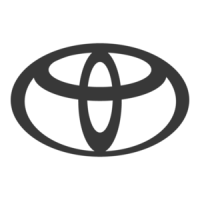
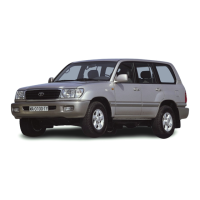
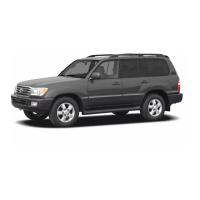
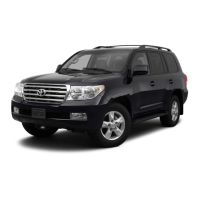
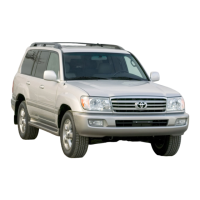
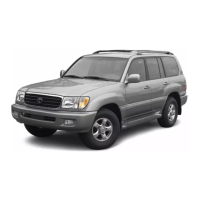
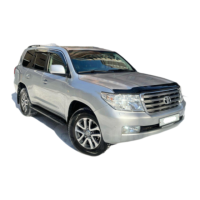
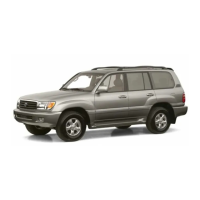
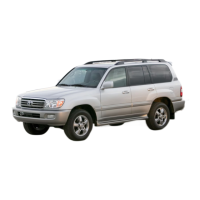
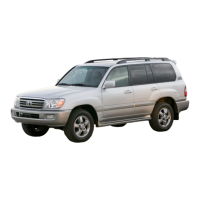
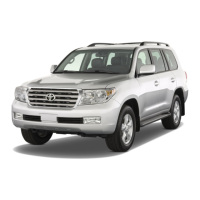

